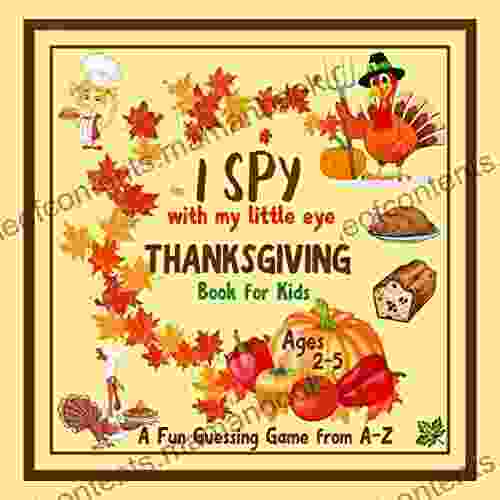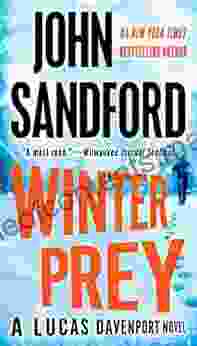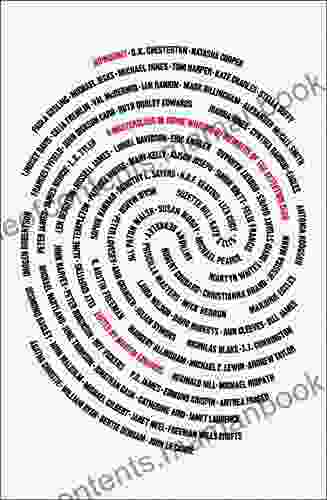Designing Literacy Learning for Student Happiness: A Comprehensive Guide


Literacy is an indispensable skill that empowers individuals with the ability to access knowledge, communicate effectively, and navigate the complexities of modern society. However, traditional approaches to literacy learning often prioritize rote memorization and standardized testing, which can stifle student motivation and undermine their overall happiness. This article aims to provide educators with a comprehensive guide to designing literacy learning experiences that foster student happiness, engagement, and lifelong learning.
4.7 out of 5
| Language | : | English |
| File size | : | 12312 KB |
| Text-to-Speech | : | Enabled |
| Screen Reader | : | Supported |
| Enhanced typesetting | : | Enabled |
| Word Wise | : | Enabled |
| Print length | : | 259 pages |
Understanding the Importance of Student Happiness
Research consistently demonstrates the critical role that happiness plays in student learning and development. Happy students are more likely to:
* Be engaged and motivated in their studies * Have higher academic achievement * Develop positive social relationships * Exhibit improved mental and physical health
Conversely, unhappy students may experience:
* Difficulty concentrating and retaining information * Low self-esteem and confidence * Social isolation and withdrawal
By prioritizing student happiness, educators can create a supportive and nurturing environment that fosters optimal learning outcomes.
Designing Literacy Learning for Happiness
1. Create Authentic and Meaningful Experiences
Students are more likely to be engaged and motivated when they can see the relevance and value of what they are learning. Incorporate real-world texts, such as news articles, personal accounts, and literary works, to connect learning to their own lives and interests. Encourage students to participate in hands-on projects and collaborative learning activities that allow them to apply their literacy skills in meaningful ways.
2. Foster a Growth Mindset
Praise students for their effort and perseverance, rather than solely focusing on their grades. Emphasize that mistakes are opportunities for learning and growth. Create a classroom environment where students feel safe taking risks and trying new strategies without fear of judgment. Encourage students to set realistic goals and celebrate their progress along the way.
3. Provide Choice and Autonomy
Allow students to have some say in the topics they study and the activities they participate in. Provide options for differentiated instruction to cater to diverse learning styles and interests. Encourage students to pursue their own interests through independent reading and writing projects. Giving students a sense of control over their learning can increase their motivation and ownership.
4. Develop a Positive Classroom Culture
Establish a welcoming and supportive classroom environment where students feel respected, valued, and connected to their peers and teachers. Promote positive relationships through cooperative learning activities, group discussions, and opportunities for students to share their experiences and perspectives. Celebrate diversity and inclusivity to create a sense of belonging for all students.
5. Encourage Social-Emotional Learning
Literacy learning is not solely about acquiring technical skills. It also involves developing social-emotional competencies, such as empathy, self-regulation, and communication. Integrate social-emotional learning activities into your literacy instruction, such as reading aloud stories that explore different emotions, discussing character traits, and providing opportunities for students to express their own feelings and perspectives.
6. Promote Physical Activity and Well-being
Research suggests that physical activity can enhance cognitive function and improve mood. Incorporate movement into your literacy lessons through brain breaks, active reading games, and writing activities that involve movement. Encourage students to take care of their physical and mental health by providing opportunities for exercise, healthy snacks, and mindfulness practices.
7. Differentiate Instruction to Meet Individual Needs
Recognize that each student has their own unique learning profile and interests. Use assessments to identify students' strengths and areas for growth. Provide differentiated instruction to meet the diverse needs of your students, such as adapting materials, providing extra support, or offering enrichment activities.
8. Collaborate with Parents and Families
Engage parents and families in your literacy learning efforts. Keep them informed about their child's progress and provide opportunities for them to support their child's learning at home. Encourage parents to read aloud to their children, provide access to books and other literacy materials, and create a stimulating home environment that fosters literacy development.
9. Evaluate for Impact
Regularly evaluate the impact of your literacy learning experiences on student happiness. Use surveys, observations, and student work samples to assess student engagement, motivation, and overall well-being. Make adjustments to your instruction based on feedback from students and other stakeholders.
Designing literacy learning for student happiness requires a holistic approach that encompasses cognitive, social, emotional, and physical well-being. By creating authentic and meaningful experiences, fostering a growth mindset, providing choice and autonomy, developing a positive classroom culture, encouraging social-emotional learning, promoting physical activity, differentiating instruction, collaborating with parents, and evaluating for impact, educators can create literacy learning environments that ignite passion, nurture happiness, and empower students for lifelong success.
4.7 out of 5
| Language | : | English |
| File size | : | 12312 KB |
| Text-to-Speech | : | Enabled |
| Screen Reader | : | Supported |
| Enhanced typesetting | : | Enabled |
| Word Wise | : | Enabled |
| Print length | : | 259 pages |
Do you want to contribute by writing guest posts on this blog?
Please contact us and send us a resume of previous articles that you have written.
 Top Book
Top Book Novel
Novel Fiction
Fiction Nonfiction
Nonfiction Literature
Literature Paperback
Paperback Hardcover
Hardcover E-book
E-book Audiobook
Audiobook Bestseller
Bestseller Classic
Classic Mystery
Mystery Thriller
Thriller Romance
Romance Fantasy
Fantasy Science Fiction
Science Fiction Biography
Biography Memoir
Memoir Autobiography
Autobiography Poetry
Poetry Drama
Drama Historical Fiction
Historical Fiction Self-help
Self-help Young Adult
Young Adult Childrens Books
Childrens Books Graphic Novel
Graphic Novel Anthology
Anthology Series
Series Encyclopedia
Encyclopedia Reference
Reference Guidebook
Guidebook Textbook
Textbook Workbook
Workbook Journal
Journal Diary
Diary Manuscript
Manuscript Folio
Folio Pulp Fiction
Pulp Fiction Short Stories
Short Stories Fairy Tales
Fairy Tales Fables
Fables Mythology
Mythology Philosophy
Philosophy Religion
Religion Spirituality
Spirituality Essays
Essays Critique
Critique Commentary
Commentary Glossary
Glossary Bibliography
Bibliography Index
Index Table of Contents
Table of Contents Preface
Preface Introduction
Introduction Foreword
Foreword Afterword
Afterword Appendices
Appendices Annotations
Annotations Footnotes
Footnotes Epilogue
Epilogue Prologue
Prologue Signe Whitson
Signe Whitson Jennifer Rao
Jennifer Rao Allen Eskens
Allen Eskens Franklin Horton
Franklin Horton Jessica Simpson
Jessica Simpson Conrad Richter
Conrad Richter Michael Night The New York Cowboy
Michael Night The New York Cowboy Ash Cash
Ash Cash Christina Scalise
Christina Scalise A M Van Dorn
A M Van Dorn Randi Lee Bowslaugh
Randi Lee Bowslaugh Taura Turner
Taura Turner R L Stine
R L Stine Dave Harris
Dave Harris Laurence M Janifer
Laurence M Janifer Diana Durham
Diana Durham Joe Davis
Joe Davis Douglas Poat
Douglas Poat Betsy Ramsey
Betsy Ramsey Frank Walters Clark
Frank Walters Clark
Light bulbAdvertise smarter! Our strategic ad space ensures maximum exposure. Reserve your spot today!

 Kyle PowellThe Hunger Artist: Layne's Unforgettable Performance Art that Captivated and...
Kyle PowellThe Hunger Artist: Layne's Unforgettable Performance Art that Captivated and... Gavin MitchellFollow ·13.1k
Gavin MitchellFollow ·13.1k Fletcher MitchellFollow ·16.3k
Fletcher MitchellFollow ·16.3k D'Angelo CarterFollow ·10.4k
D'Angelo CarterFollow ·10.4k Junot DíazFollow ·18.2k
Junot DíazFollow ·18.2k Bernard PowellFollow ·16.3k
Bernard PowellFollow ·16.3k Braden WardFollow ·18.7k
Braden WardFollow ·18.7k Keith CoxFollow ·16k
Keith CoxFollow ·16k Andrew BellFollow ·9.8k
Andrew BellFollow ·9.8k

 Derek Bell
Derek BellLike An Eagle Alta Mabin: A Literary Journey Through the...
Like An Eagle Alta Mabin is a powerful...

 Garrett Powell
Garrett PowellOne in the Way of Dan: A Complex and Nuanced Novel
Dan is a successful...

 Foster Hayes
Foster HayesThe Ultimate Air Fryer Cookbook for Beginners: A...
Welcome to...

 Paulo Coelho
Paulo CoelhoFun Guessing Game From Cute Pictures: The Best Gift for...
Looking for a fun...

 Dan Henderson
Dan HendersonEnglish Poetry About Modern Day Japan: A Journey Through...
Step into the realm where...

 Jamie Blair
Jamie BlairThe Enigma of Patricide Dave Harris: A Journey into the...
The annals of true crime are replete with...
4.7 out of 5
| Language | : | English |
| File size | : | 12312 KB |
| Text-to-Speech | : | Enabled |
| Screen Reader | : | Supported |
| Enhanced typesetting | : | Enabled |
| Word Wise | : | Enabled |
| Print length | : | 259 pages |










